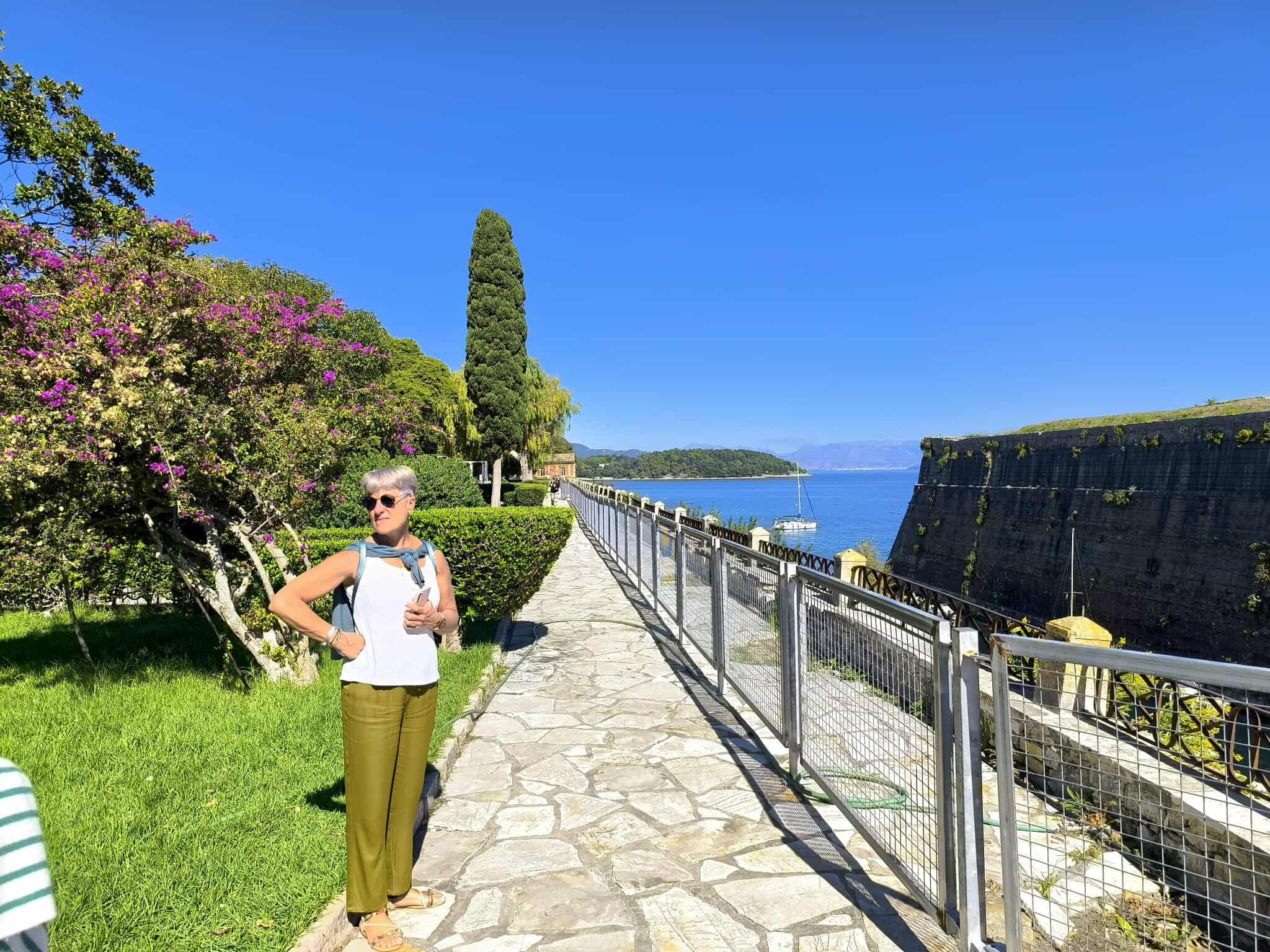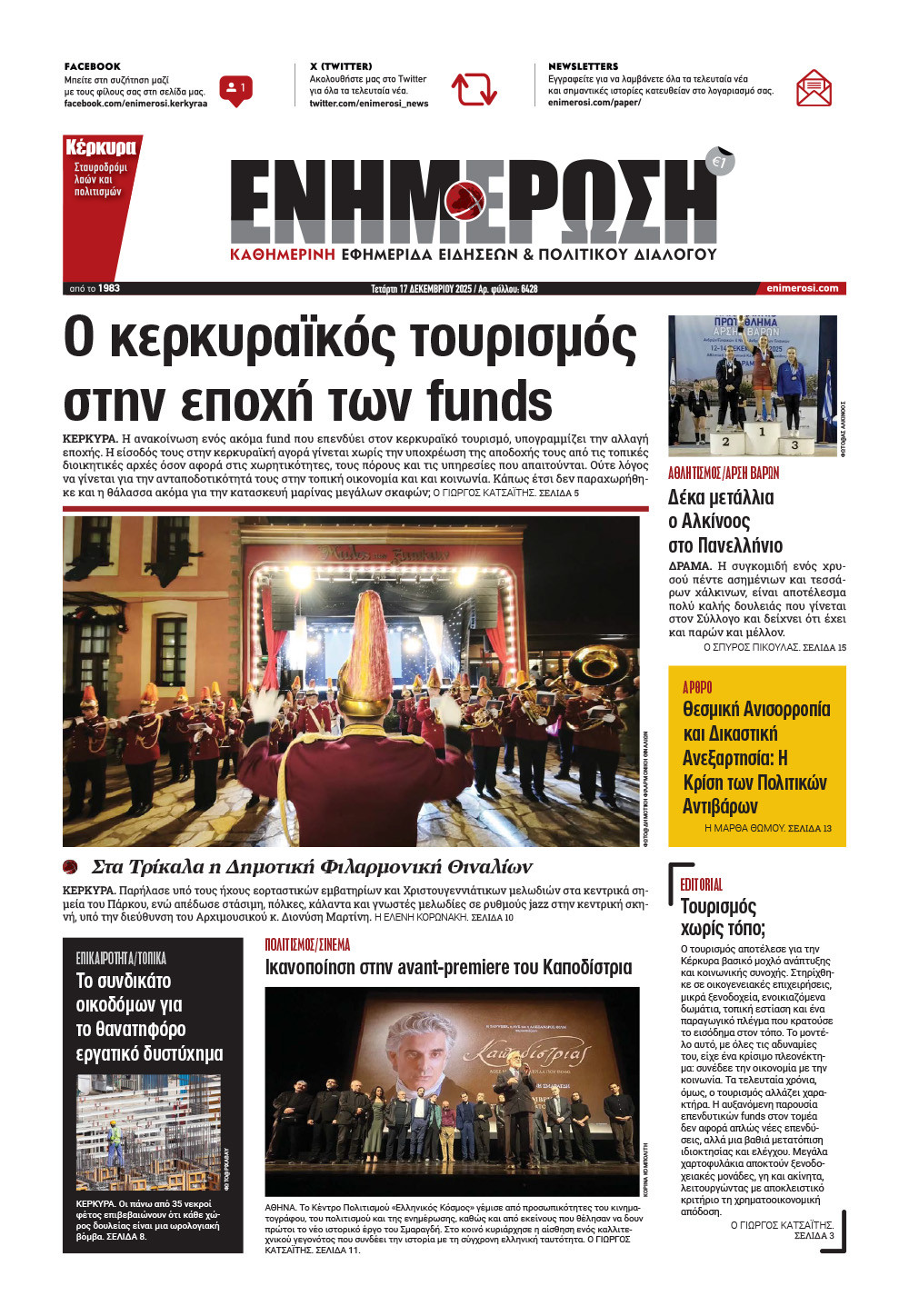Metal fence set up along Contra Fossa

CORFU. The visible weakening of the wall — part of which collapsed onto NAOK in the 1970s — led to the urgent installation of a metal fence along its entire length, reaching all the way to the palace and the People’s Garden.
Memories of the wall’s collapse above NAOK have been revived as the structural problems worsen along its entire length. That’s why fence has now been installed along the top of the wall — from the Aktaion, through Bosketo, all the way to Mandrakina. This prevents visitors from approaching the parapet, since they risk falling into the void: the old iron railings have bent outward, destabilised by the wall itself, which is now in danger of collapsing.
It’s worth recalling that the first to “depart” was the founder of the Ionian Academy, Guilford — his statue was moved so that it wouldn’t slide down toward the Contra Fossa.
Even so, crowds of visitors keep coming and going through the fortress, admiring it, while the buses — which, according to traffic regulations in force for decades (and again this year), are only supposed to drop people off, not park — remain there constantly and permanently. Thus they form a kind of third moat, together with the dry one (where the abandoned underground hall of the summit is located) and the Contra Fossa. It’s a bus-moat now, hiding the collapsing slopes beneath it!

Everything needs a kind of fig leaf. After all, that’s exactly the role artists assigned to it during the Renaissance — to cover the sensitive parts!
Sources from the Ephorate of Antiquities have given assurances that halting the collapse and restoring these slopes as well is a project included in the master plan for the medieval fortifications, which will be funded by ESPA.
GIORGOS KATSAITIS





